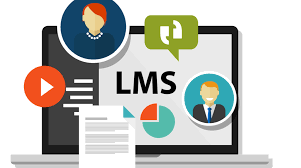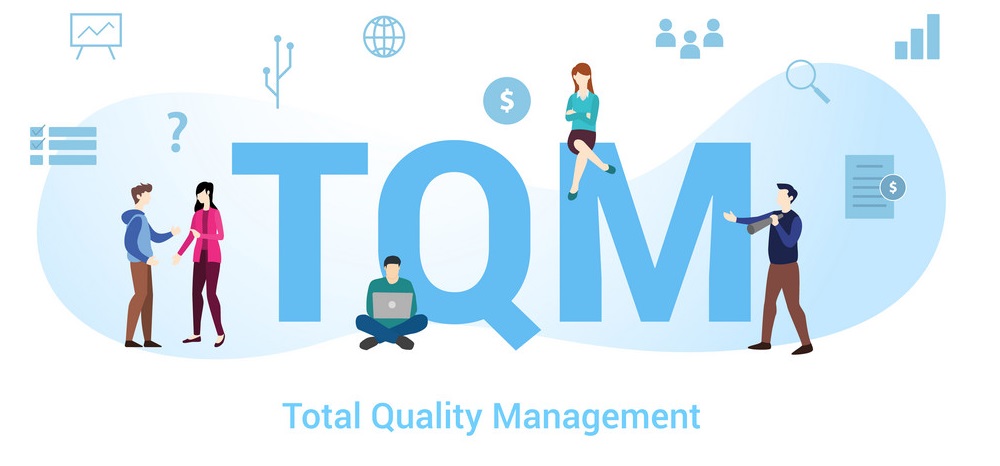-
Table of Contents
Blending the best of both worlds for enhanced education.
Hybrid learning models refer to educational approaches that combine traditional face-to-face instruction with digital learning methods. This blending of traditional and digital instruction aims to create a more flexible and personalized learning experience for students. By incorporating both in-person and online components, hybrid learning models offer the benefits of both approaches, allowing for increased engagement, collaboration, and access to resources. This introduction provides a brief overview of hybrid learning models and their purpose in integrating traditional and digital instruction.
Benefits of Hybrid Learning Models in Education
Hybrid learning models have gained significant attention in the field of education in recent years. By combining traditional face-to-face instruction with digital tools and resources, these models offer a range of benefits that can enhance the learning experience for students. In this section, we will explore some of the key advantages of hybrid learning models in education.
One of the primary benefits of hybrid learning models is the flexibility they provide. With a blend of traditional and digital instruction, students have the opportunity to learn at their own pace and in their own time. This flexibility allows for personalized learning experiences, as students can access digital resources and complete online assignments outside of the traditional classroom setting. This can be particularly beneficial for students who may need additional time or support to grasp certain concepts.
Another advantage of hybrid learning models is the increased engagement they can foster. By incorporating digital tools and resources, educators can create interactive and multimedia-rich learning experiences that capture students’ attention and make learning more enjoyable. For example, online simulations, virtual field trips, and interactive quizzes can all be used to engage students in a way that traditional instruction alone may not be able to achieve. This increased engagement can lead to improved motivation and a deeper understanding of the subject matter.
Hybrid learning models also promote collaboration and communication among students. Through online discussion boards, video conferencing, and collaborative projects, students can connect with their peers and work together on assignments and projects. This collaborative aspect of hybrid learning models not only enhances students’ social and communication skills but also exposes them to diverse perspectives and ideas. By working with others, students can develop important teamwork and problem-solving skills that are essential in today’s interconnected world.
Furthermore, hybrid learning models can provide students with access to a wide range of digital resources and materials. With the internet at their fingertips, students can explore a wealth of information and engage with multimedia content that can enhance their understanding of the subject matter. This access to digital resources also allows for differentiated instruction, as educators can provide students with additional materials or alternative explanations to cater to their individual needs and learning styles.
In addition to these benefits, hybrid learning models can also help prepare students for the digital age. In today’s technology-driven world, digital literacy and proficiency are essential skills. By incorporating digital tools and resources into the learning process, students can develop the technological skills they will need in their future careers. This can include skills such as online research, digital communication, and the ability to navigate and evaluate information online.
In conclusion, hybrid learning models offer numerous benefits in education. From increased flexibility and engagement to enhanced collaboration and access to digital resources, these models provide a well-rounded and personalized learning experience for students. Moreover, they help prepare students for the digital age by developing essential technological skills. As the field of education continues to evolve, hybrid learning models are likely to play an increasingly important role in shaping the future of learning.
Implementing Hybrid Learning Models: Best Practices and Strategies
Implementing Hybrid Learning Models: Best Practices and Strategies
Hybrid learning models have gained significant popularity in recent years as educational institutions strive to adapt to the digital age. By blending traditional face-to-face instruction with online learning, hybrid models offer a flexible and personalized approach to education. However, successfully implementing these models requires careful planning and consideration. In this article, we will explore some best practices and strategies for implementing hybrid learning models.
One of the first steps in implementing a hybrid learning model is to clearly define the goals and objectives of the program. This involves identifying the specific learning outcomes that the hybrid model aims to achieve. By having a clear understanding of the desired outcomes, educators can design the curriculum and select appropriate instructional strategies that align with these goals.
Another important aspect of implementing a hybrid learning model is to ensure that the necessary technological infrastructure is in place. This includes providing students with access to reliable internet connection and appropriate devices for online learning. Additionally, educators should be trained in using the digital tools and platforms that will be utilized in the hybrid model. By investing in the necessary technology and training, educational institutions can create a seamless and effective learning experience for students.
One of the key advantages of hybrid learning models is the ability to personalize instruction. By leveraging digital tools and platforms, educators can provide individualized learning experiences that cater to the unique needs and preferences of each student. This can be achieved through the use of adaptive learning software, which adjusts the content and pace of instruction based on the student’s performance and progress. Additionally, educators can utilize online discussion forums and collaborative platforms to facilitate peer-to-peer learning and engagement.
In order to ensure a smooth transition between the traditional and digital components of the hybrid model, it is important to establish clear communication channels. This includes providing students with detailed instructions and guidelines for accessing and navigating the online learning materials. Educators should also be readily available to answer any questions or concerns that students may have. By fostering open lines of communication, students can feel supported and empowered to take ownership of their learning.
Assessment and feedback are crucial components of any educational program, and hybrid learning models are no exception. Educators should design assessments that align with the learning outcomes and incorporate both traditional and digital assessment methods. This can include traditional exams and quizzes, as well as online assignments and projects. Additionally, providing timely and constructive feedback to students is essential for their growth and development. Digital tools can facilitate the efficient and effective delivery of feedback, allowing educators to provide personalized and actionable insights.
Finally, ongoing evaluation and reflection are essential for the continuous improvement of the hybrid learning model. Educational institutions should regularly assess the effectiveness of the program and gather feedback from students and educators. This feedback can be used to identify areas of improvement and make necessary adjustments to the curriculum and instructional strategies. By embracing a culture of continuous improvement, educational institutions can ensure that their hybrid learning models remain relevant and impactful.
In conclusion, implementing hybrid learning models requires careful planning and consideration. By clearly defining goals, ensuring technological infrastructure, personalizing instruction, establishing clear communication channels, incorporating assessment and feedback, and embracing ongoing evaluation, educational institutions can successfully implement hybrid learning models. By blending traditional and digital instruction, these models offer a flexible and personalized approach to education that prepares students for success in the digital age.
Overcoming Challenges in Hybrid Learning: Tips for Success
Overcoming Challenges in Hybrid Learning: Tips for Success
Hybrid learning, which combines traditional face-to-face instruction with digital tools and resources, has become increasingly popular in education. This model offers flexibility and personalized learning experiences for students, but it also presents unique challenges for both educators and learners. In this article, we will explore some of the common challenges faced in hybrid learning and provide tips for success.
One of the main challenges in hybrid learning is maintaining student engagement. With a mix of in-person and online instruction, it can be difficult to keep students actively involved in their learning. To overcome this challenge, educators can incorporate interactive activities and discussions during in-person sessions. This allows students to collaborate and engage with their peers, fostering a sense of community and motivation. Additionally, using digital tools such as online quizzes and interactive simulations can make online learning more interactive and engaging.
Another challenge in hybrid learning is ensuring equitable access to technology and resources. Not all students may have access to reliable internet or devices at home, which can hinder their ability to participate fully in online learning. To address this challenge, schools can provide loaner devices and internet hotspots to students in need. Educators can also design lessons that can be completed offline, allowing students without internet access to still participate in the learning process. It is important to regularly check in with students to ensure they have the necessary resources and support to succeed in hybrid learning.
Time management is another common challenge in hybrid learning. With a mix of in-person and online instruction, students need to effectively manage their time to complete assignments and stay on track. To help students develop good time management skills, educators can provide clear deadlines and expectations for assignments. They can also teach students strategies for prioritizing tasks and breaking them down into manageable steps. Additionally, educators can use digital tools such as learning management systems to provide students with a clear overview of their assignments and due dates.
Communication is crucial in hybrid learning, but it can be challenging when students are not physically present in the classroom. To overcome this challenge, educators can use a variety of communication tools such as email, video conferencing, and discussion boards. Regularly checking in with students and providing timely feedback on their work can help maintain a strong teacher-student relationship. It is also important to establish clear communication channels with parents or guardians to keep them informed about their child’s progress and any challenges they may be facing.
Lastly, assessment and feedback can be challenging in hybrid learning. Traditional methods of assessment may not be suitable for online learning, and it can be difficult to provide timely feedback to students. To address this challenge, educators can use a mix of formative and summative assessments that align with the learning objectives. Digital tools such as online quizzes and self-assessment tools can provide immediate feedback to students. Educators can also schedule regular check-ins with students to discuss their progress and provide personalized feedback.
In conclusion, hybrid learning offers many benefits but also presents unique challenges. By addressing these challenges and implementing the tips provided, educators can create a successful hybrid learning environment that promotes student engagement, equitable access to resources, effective time management, clear communication, and meaningful assessment and feedback. With the right strategies and support, hybrid learning can be a powerful tool for enhancing student learning and preparing them for the digital age.
Conclusion
Hybrid learning models, which combine traditional face-to-face instruction with digital tools and resources, have gained significant attention in recent years. This approach offers a balanced and flexible learning experience for students, allowing them to benefit from the advantages of both traditional and digital instruction. By incorporating technology into the classroom, hybrid learning models enhance student engagement, collaboration, and personalized learning. Additionally, they provide opportunities for students to develop digital literacy skills and adapt to the digital age. However, successful implementation of hybrid learning models requires careful planning, effective teacher training, and access to reliable technology infrastructure. Overall, hybrid learning models have the potential to revolutionize education by creating a dynamic and inclusive learning environment that prepares students for the challenges of the 21st century.




